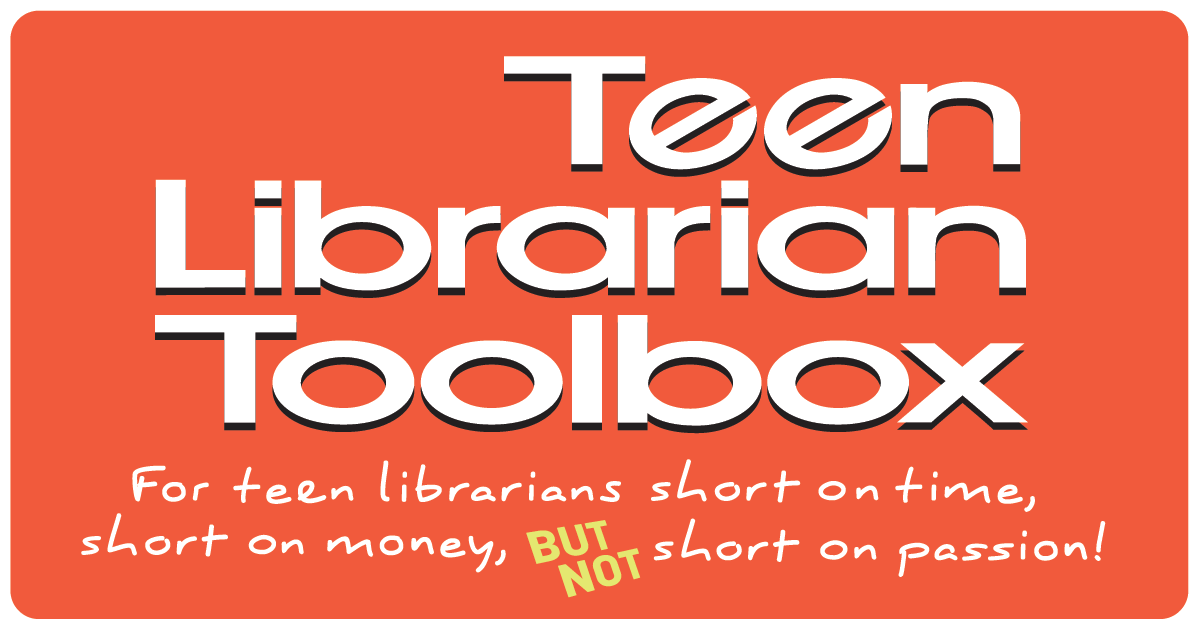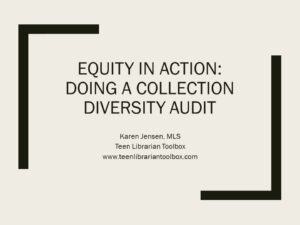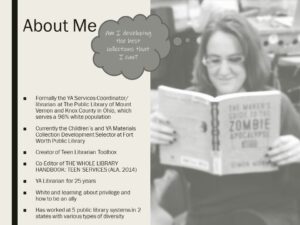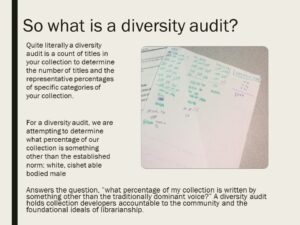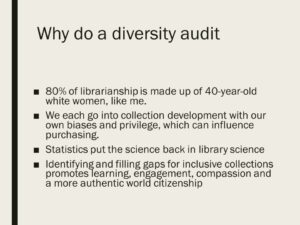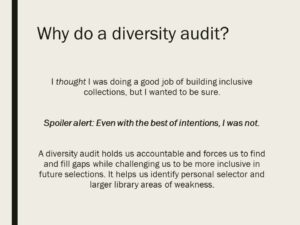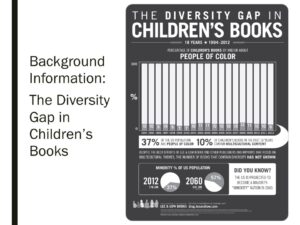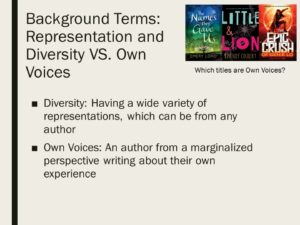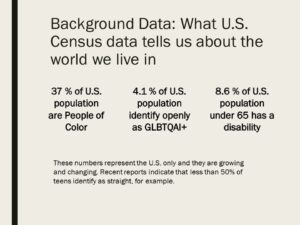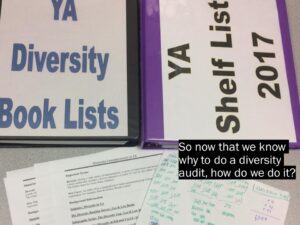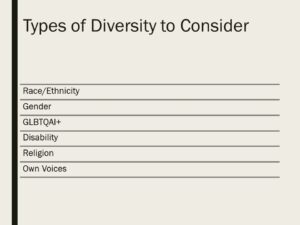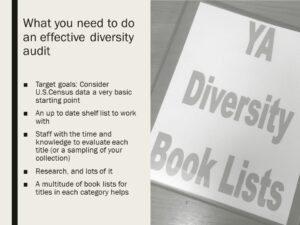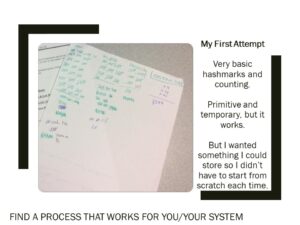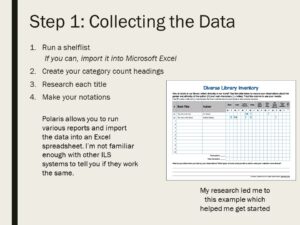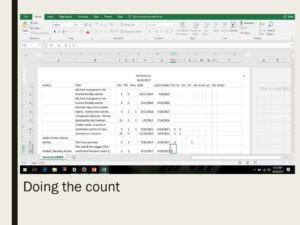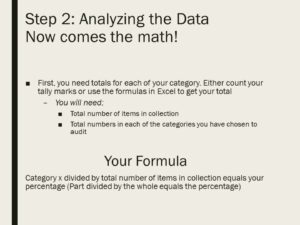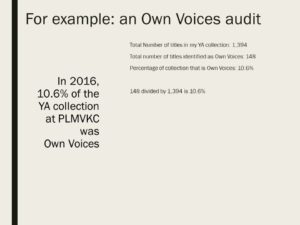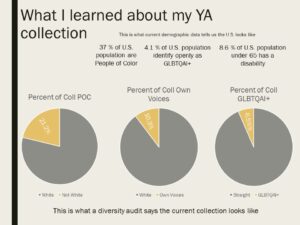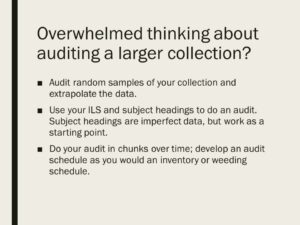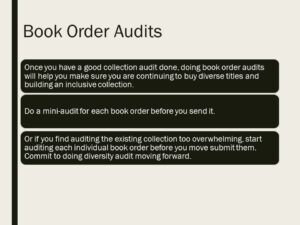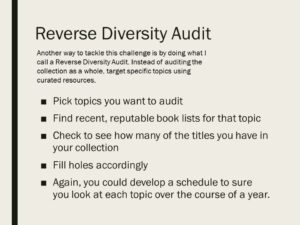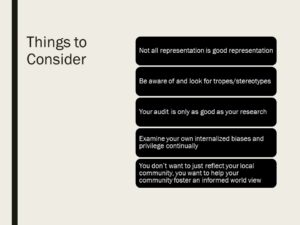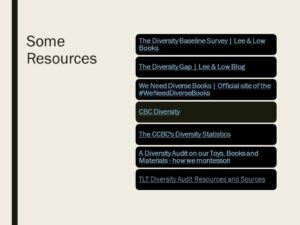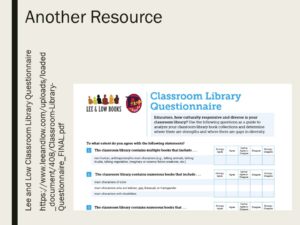Library Journal’s Equity in Action: Doing a Diversity Audit
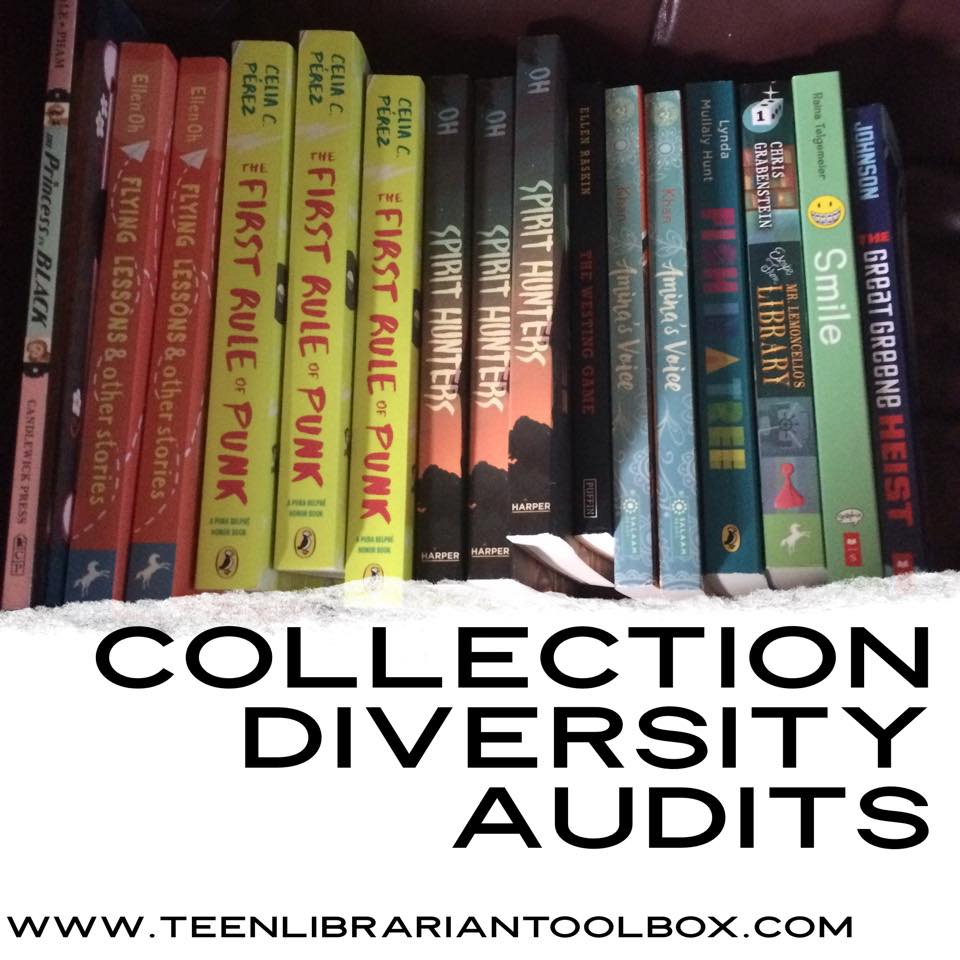
In 2016, I began the process of doing a diversity audit of my YA collection to help me determine what percentage of my collection was diverse. My goal was to help me determine how I was doing as someone in charge of collection development to make me aware of my own short comings to build a better, more inclusive collection. At the time, I was working at The Public Library of Mount Vernon and Knox County in Ohio. Over the last two years, I have been refining my process. I have also been asked to speak on this topic several times, and each time I do I work on better articulating the what, why and how of a diversity audit. Yesterday I was invited to speak as part of the Library Journal Equity in Action online webinar and I share my current thoughts and process with you below.
To begin, you should know that I did not come up with the term diversity audit and I had no idea that was what I was doing. I simply began tweeting about what I was doing and I think it was someone from School Library Journal, perhaps Stephanie Sendaula or Kathy Ishizuka who used the term diversity audit and helped me better frame what it was I was trying to do.
ADVERTISEMENT
ADVERTISEMENT
When I began researching more specifically the idea of a collection diversity audit and models to follow, I did not find a lot of information and to be honest, I still don’t. My process continues to evolve and become more refined as people ask questions and share their own personal experiences and insights. I’m also in the process of working on a more comprehensive Own Voices/Diverse YA list to help me in this process. The simple act of working on the list has helped me to know authors and collections better and makes the audit that much easier and faster; because I have more knowledge in my head or a quick reference I can turn to, the audit itself is faster and less cumbersome.
I’m not going to lie, the initial attempt was flawed so I started over. And that first attempt took a long time, in part because I had a lot of other duties I was responsible for as well so I approached the audit over a period of months in small chunks of time. It’s not the same as doing an inventory where you go in and commit yourself to this one day or one week of inventory, I gave myself permission to take my time, figure out the process, and do the best job that I could and learn from the experience. I later did the same for my graphic novel collection and this time, it went more quickly because I had some basic understanding of what I wanted to do and a better process of how I could effectively do it.
The ILS I used at the time was Polaris, which allowed me to create an active shelf list which I imported into Excel. This allowed me to save my work as I worked in chunks and it means the next time I approach the audit, I already have a good baseline. In fact, after I did an audit of the entire YA collection, I then just started auditing my monthly YA book orders and adjusting my figures. A huge initial audit can be supplemented and a collection maintained by doing book order audits.
I had no idea what I was doing when I began this task. It was at times frustrating and overwhelming, but the results have been rewarding and I’m not going to lie, challenging. We all think we’re doing a good job of building unbiased, inclusive collections, but I can guarantee you that most of us are not. Looking at the hard data helped me to personally recognize some collection development weak spots moving forward and it changed the way I approached selecting materials. And now, when personally or professionally challenged, I have some better data to back up my claim that I am working to build a well-rounded, inclusive collection. Collection development requires a lot of intentionality if we’re doing it right, and the data gathered in a collection diversity audit is some of the data we need to be more intentional.
Here’s a look at my slides from yesterday’s Equity in Action conference hosted by Library Journal.
Source: https://sfpsmom.com/whats-schools-diversity-index/
As I have mentioned, the data I am sharing with you comes from my time as the YA Services Coordinator at The Public Library of Mount Vernon and Knox County, Ohio. I no longer work at this library, but I left with the full confidence and pride that they had an amazing YA collection that I had actively worked to make inclusive and well-rounded so that each teen who visited that library would find a wide variety of books that featured characters that looked like them and a wide variety of books that featured characters that were completely different from them so that they could truly walk in the shoes of someone else and develop a more holistic world view.
If you find the idea of a collection diversity audit overwhelming, I would like to suggest that you pick target subject areas and do what I call a Reverse Diversity Audit. You may not be able to do an entire collection, but you can pinpoint subjects that you want to check and see how you’re doing. Each year as Pride approaches, for example, I do a quick Reverse Diversity Audit to find any lost, missing or damaged materials and fill those holes. GLBTQ materials in particular come up missing a lot I find because teens aren’t always ready to read them openly so they will take them without checking them out so that they don’t have to interact with adults or their peers. I also recommend making sure you have a lot of GLBTQ titles in your digital collections to help those teens who want to read these materials but want to do so with more privacy and ease.
Doing a YA Collection Diversity Audit: Resources and Sources
Filed under: Uncategorized
About Karen Jensen, MLS
Karen Jensen has been a Teen Services Librarian for almost 30 years. She created TLT in 2011 and is the co-editor of The Whole Library Handbook: Teen Services with Heather Booth (ALA Editions, 2014).
ADVERTISEMENT
ADVERTISEMENT
SLJ Blog Network
2024 Books from Coretta Scott King Winners
The Ultimate Love Letter to the King of Fruits: We’re Talking Mango Memories with Sita Singh
Monkey King and the World of Myths: The Monster and the Maze | Review
Parsing Religion in Public Schools
ADVERTISEMENT

